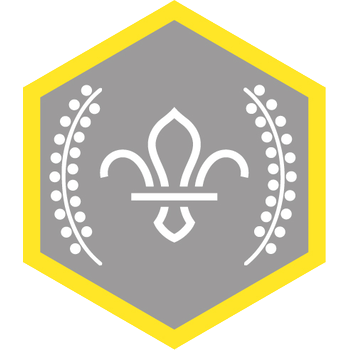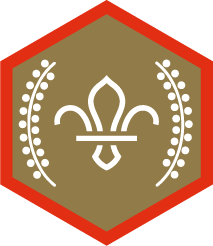
How do you see the world?
You’ll need
- Coloured pens or pencils
- A4 paper
Before you begin:
- Use the safety checklist to help you plan and risk assess your activity. Additional help to carry out your risk assessment, including examples can be found here. Don’t forget to make sure all young people and adults involved in the activity know how to take part safely.
- Make sure you’ll have enough adult helpers. You may need some parents and carers to help if you’re short on helpers.
Please note: This activity can be done by everyone. It’s about learning to see that people interpret the world in different ways and we can understand other people’s perspectives, reactions, points of view to be respectful and accommodating to them. Though this activity’s partnered with the National Autistic Society, the theme is Understanding Disability. Therefore, this activity is about learning about sensory difference, which isn’t necessarily linked to autism.
Starting the activity
- Gather everyone in a group
- Explain that everyone’s different and people see things differently. Some people also could have sensory differences, which means the way they see and interpret the world may be a lot different to how you might see something, too. They can be over-sensitive and under-sensitive, and sometimes we might not even know a person has them.
- Tell everyone that they’ll see the world differently to everyone else in the room, whether they have sensory differences or not. To show this, you’re going to do an activity to understand how people see the world, objects, scenarios and items differently.
Run the activity
- Split the group into pairs. If there's an odd number of people, an adult volunteer or young leader can be in one of the pairs.
- In each pair, one person should be ‘A’ and the other ‘B'.
- Everyone should sit back-to-back with their pair. Make sure that person B has paper and some coloured pens or pencils.
- Ask the person A in each group to think of an object. It could be an object in or around the meeting place, or one they use every day. You could make some cards with some ideas on for people to choose from.
- Person A should try to describe the object to person B, without saying what it is. Person B should then try to draw the object from Person A's description.
- When they've finished drawing, Person B should try to guess what the object is from the drawing.
- Everyone could then swap their picture with another pair and try to guess what the object is that the other pair have drawn.
- The person leading the activity should explain to the group that everyone sees and interprets the world, objects or spaces differently.
At the end
- Gather everyone back together in a group.
- Explain that by asking people to draw and guess the same items, we can demonstrate that each person will see it or describe it differently. No-one’s interpretation will be the same, although they may be similar. We’ve shown that everyone’s different and people see things differently.
- Remind everyone again that some people also could have sensory differences, which means the way they see and interpret the world may be a lot different to how you might see something, too. They can be over-sensitive and under-sensitive, and sometimes we might not even know a person has them. For example, one person may find the level of noise during a game OK, but someone else may need to wear ear defenders because they hear the game differently. That makes them more comfortable, and we should be understanding and respectful of this.
- Another example is that people may find certain background sounds, such as music in a restaurant, which other people can ignore or block out, to be unbearably loud or distracting noises. This can cause anxiety or even physical pain. Schools, workplaces and shopping centres can be particularly overwhelming and cause sensory overload.
- You could also use the example of autism to show how these differences aren’t always obvious and explain that autistic people may see, hear and feel things in a way that can some situations more difficult for them. Some autistic people may experience sensitivity to sounds, touch, tastes, smells, light, colours, temperatures or pain.
- Tell everyone that there are many simple adjustments that can be made to make environments better for people with sensory differences.
- See if anyone can think of how we could help people with sensory differences at Scouts. Some ideas might be not having flashing lights, having quieter spaces, having a visual timetable, provide sunglasses or ear plugs, avoid wearing perfumes or strong deodorants, or allowing people to wear clothes they’re comfortable in.

This activity helps contribute towards some of the UN's Sustainable Development Goals. Find out more about the SDGs, and how Scouts across the world are getting involved.


Reflection
The group have seen how hard it can be to identify an object or feature from a description. Find out who had the hardest job: person A, who had to describe something without saying what it was, person B, who had to use the description to draw it without knowing what it was, or the other pairs, who had to identify the objects or features from the drawing.
Without being able to see, smell, hear or touch something, an object or feature can be difficult to identify. Ask the group how they would cope with things that they do every day if they lived with sensory differences. How might they spot someone who is struggling and what could they do to help them?
Safety
All activities must be safely managed. You must complete a thorough risk assessment and take appropriate steps to reduce risk. Use the safety checklist to help you plan and risk assess your activity. Always get approval for the activity, and have suitable supervision and an InTouch process.
To make the challenge more difficult, person A could give a more limited description, with less specific information like colour, shape or texture. This might also reflect a more pronounced sensory difference.
To make it easier, person A could give a clue about the name of the object or feature, such as the first letter.
Make it accessible
All Scout activities should be inclusive and accessible.
The group could look at other scenarios, such as walking down a busy street, and think about how this may be different or challenging for somebody with sensory differences.


